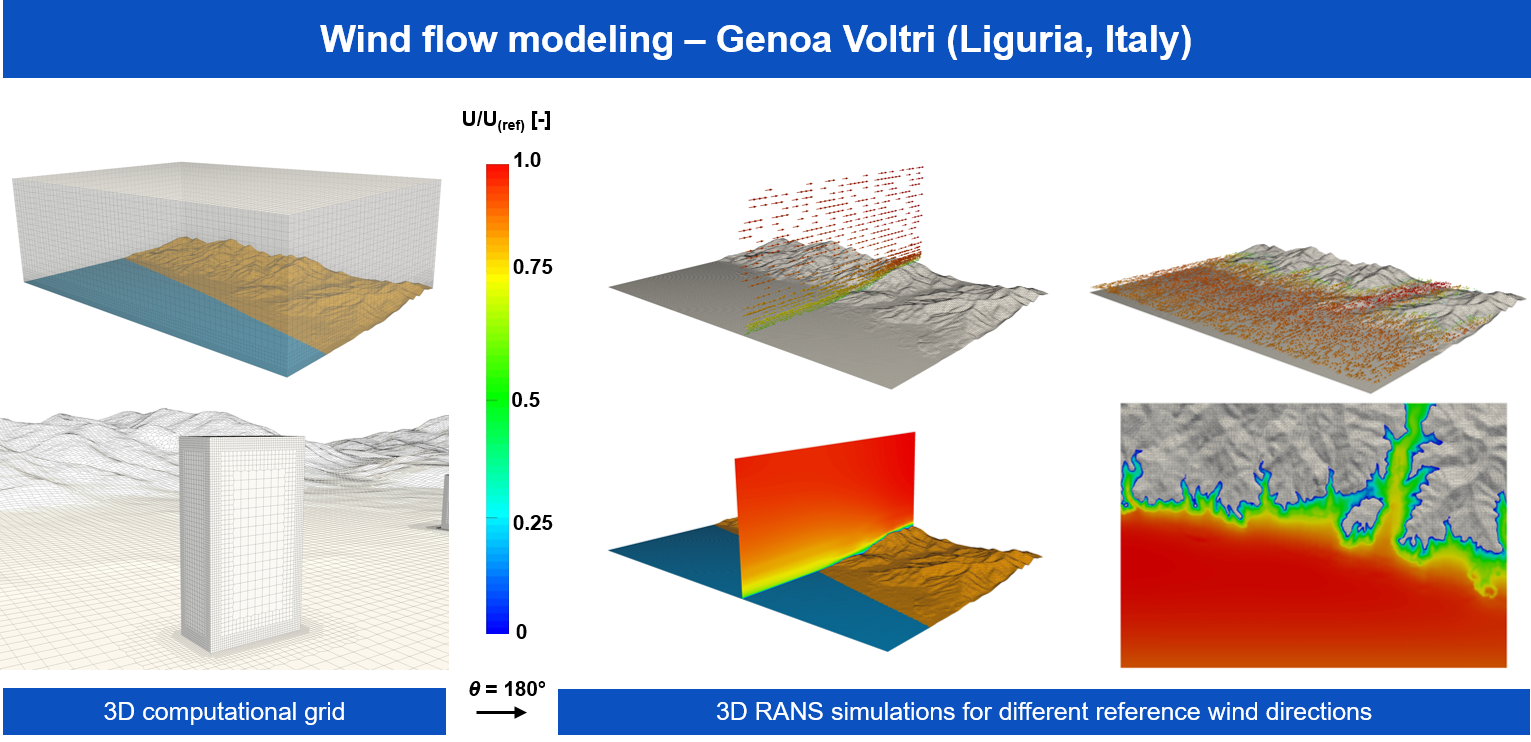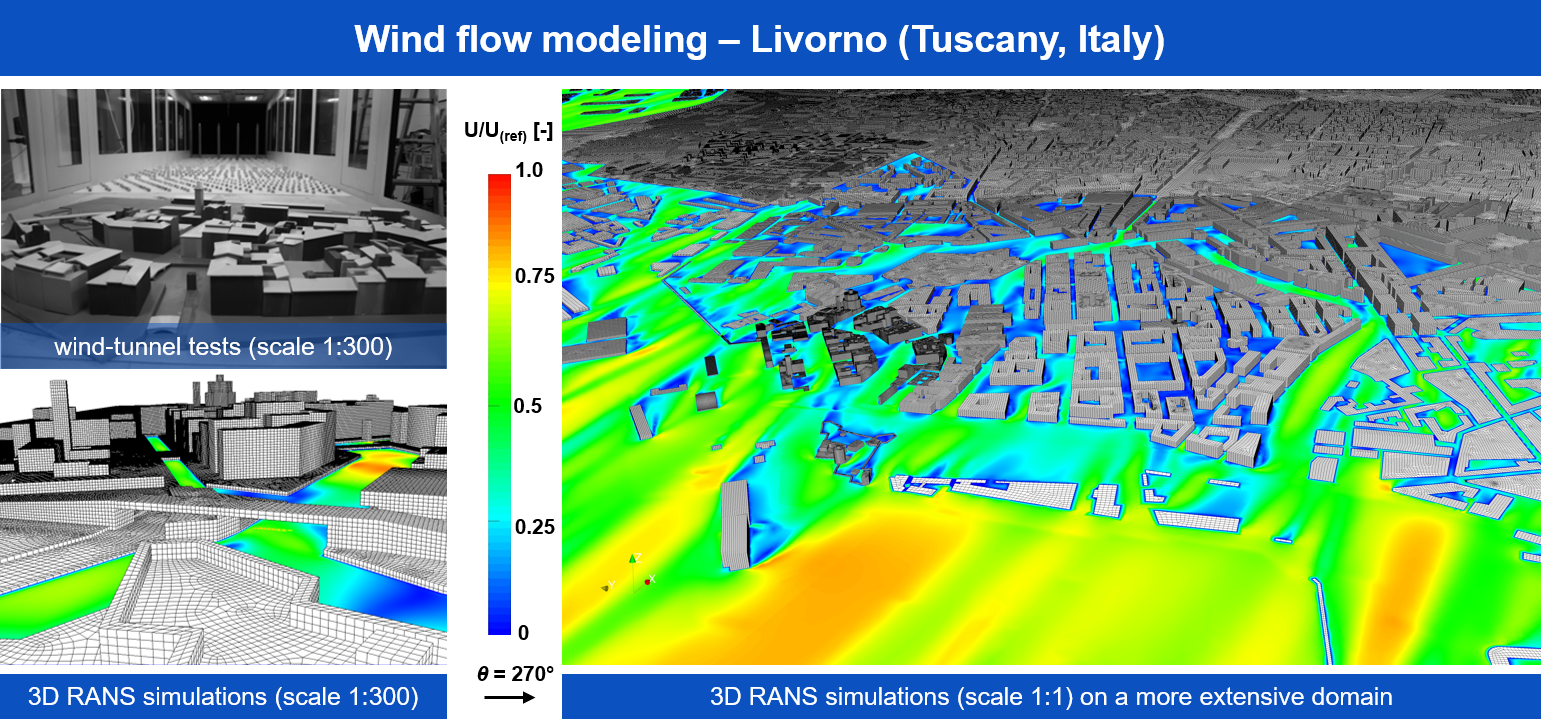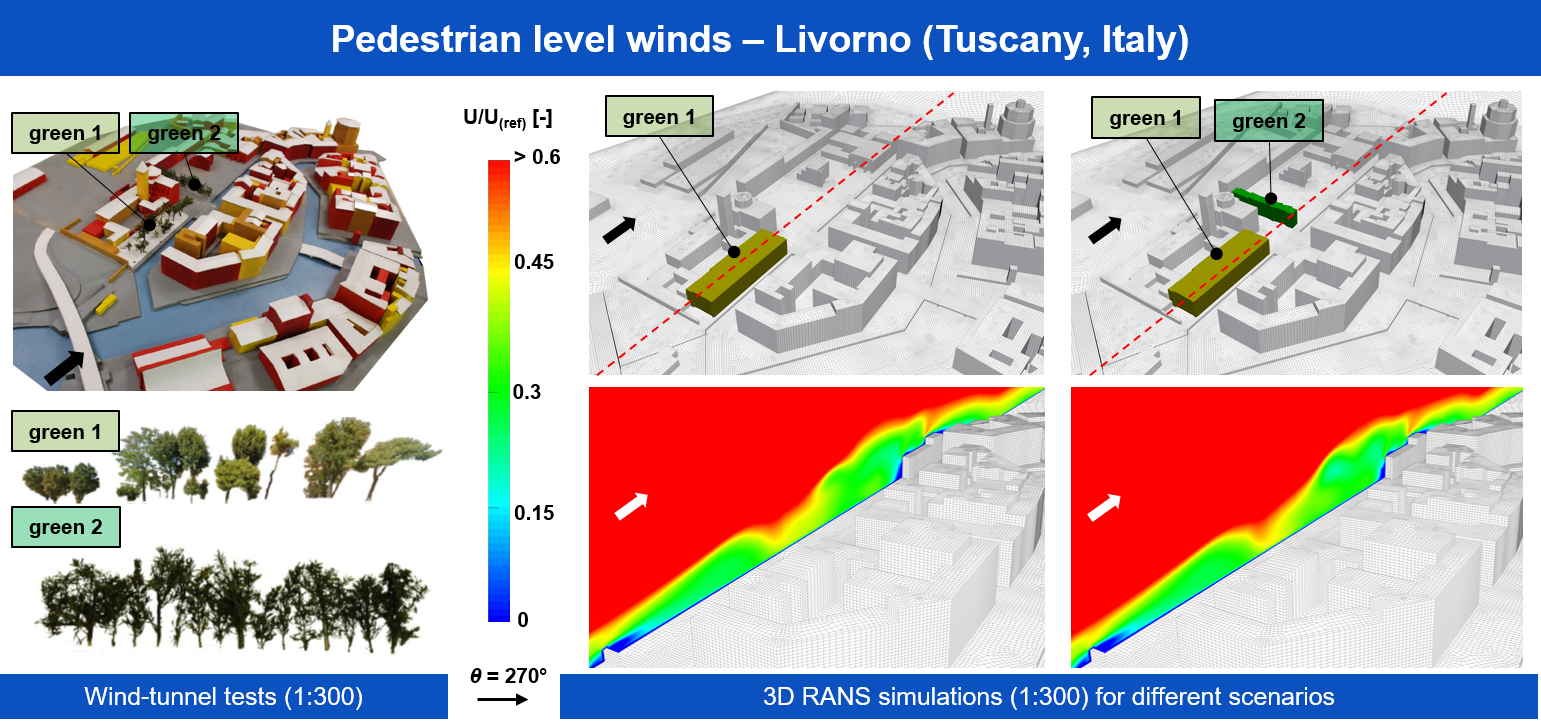Wind measurement, modelling and simulation
An extensive wind monitoring network has been realised in the High Tyrrhenian Sea area that is made up of 40 ultra-sonic anemometers and 4 LiDAR scanners.
Data have been gathering into a huge database. An advanced algorithm has been implemented to separate records detected in the course of different weather phenomena such as extra-tropical cyclones, thunderstorm downbursts and intermediate events.
Analytical and numerical models have been developed to represent the mean wind velocity profile, atmospheric turbulence and the peak wind speed in flat and complex terrains.
Numerical algorithms have been implemented to simulate multi-variate and multi-dimensional wind fields in stationary and non-stationary regimes.
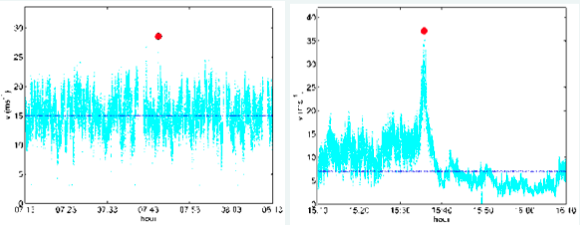
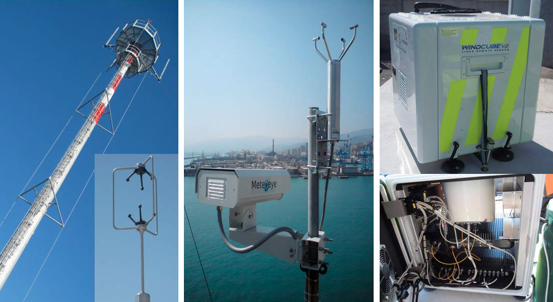

Wind measurement, modelling and simulation
Operational wind forecast model in urban areas.
Wind flow in urban areas governs a large number of important issues such as pollutant dispersion, wind-driven rain, pedestrian wind comfort, energy performance of buildings and urban wind energy. However, the complex morphology of cities, which gives rise to a variety of complex flow phenomena such as separation, recirculation and local thermal effects, renders the description of wind flow in urban areas very difficult.
According to the state of the art knowledge of the topic, two different approaches to investigate urban flows are nowadays commonly adopted for wind engineering applications: Computational Fluid Dynamics (CFD) numerical modeling and wind-tunnel testing. In the last decades several studies have focused on wind flow numerical modeling over random urban like obstacles, uniform and staggered building arrays, idealized urban surfaces, a semi idealized urban canopy, and actual urban environments. Many uncertainties and errors are related to geometrical model precision, inflow conditions, turbulence models, discretization schemes and numerical approaches (RANS, LES, DNS). However, it is currently not known to which extent the different uncertainties can affect the experimental and numerical results. Both experimental tests and numerical simulations can help to quantify the impact of different parameters considered in order to improve the reliability of the results.
For this purpose, several urban environments (e.g. Livorno and Genoa Voltri) have been chosen as cases study. The methodology adopted in this work consists of on-site measurements, wind-tunnel tests and CFD simulations. The wind characteristics in selected areas are monitored by means of a series of instruments (e.g. ultrasonic anemometers, LiDAR scanner and profilers), installed in the framework of the European Projects “Wind and Ports” (2009 – 2012), “Wind, Ports and Sea” (2014 – 2015) and “THUNDERR” (2017 – 2022). Wind-tunnel tests are usually carried out on a reduced scale model (1:200 – 1:300) at the University of Genoa.
The final goal of a large number of the above-mentioned applications is to provide the scientific community with an operational wind forecast model. This will be carried out through a nest of models, from the global scale to the local scale using the Global Forecast System (GFS), the Weather Research and Forecasting (WRF) model, the mass-consistent model Wind Interpolation by Non-Divergent Schemes (WINDS) and the Computational Fluid Dynamics (CFD) model.
